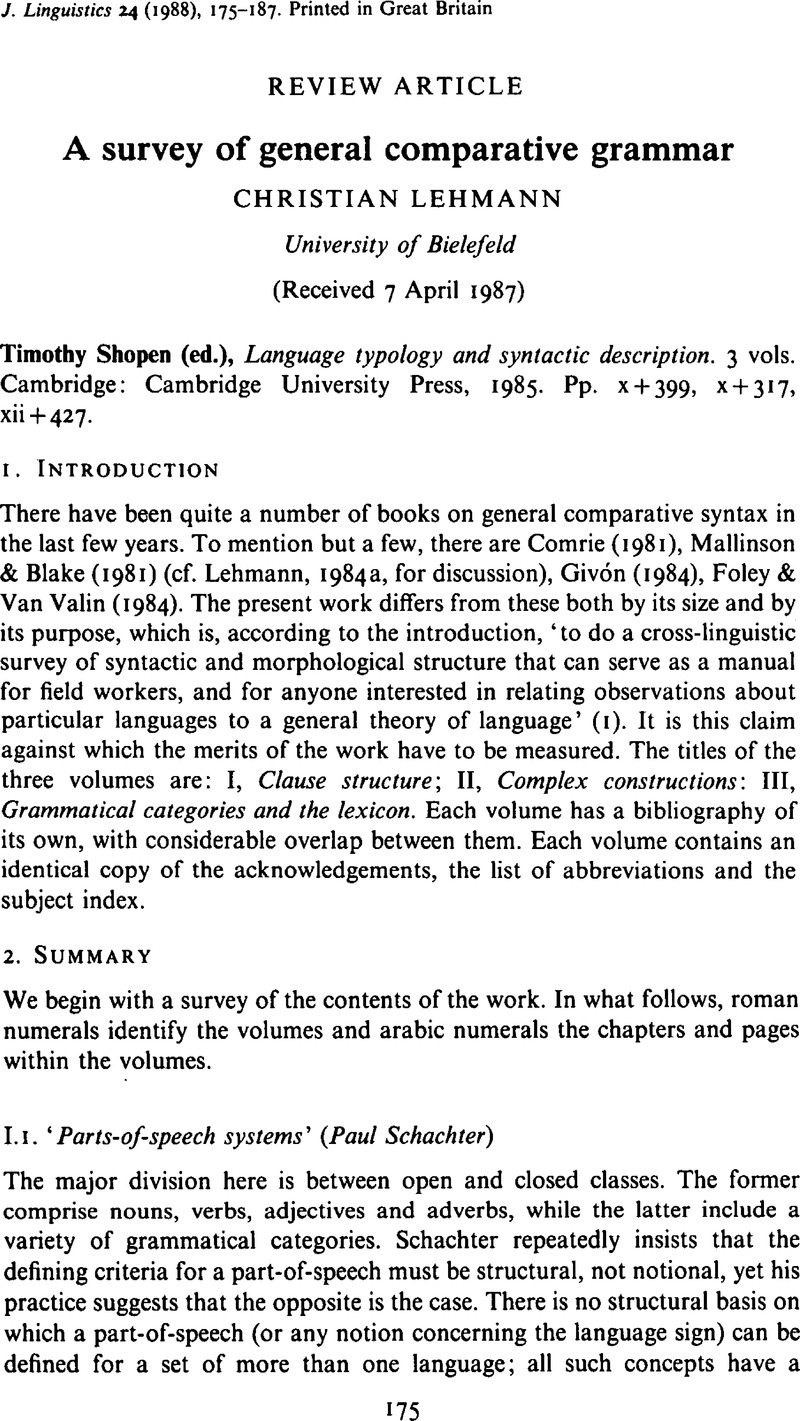No CrossRef data available.
Article contents
A survey of general comparative grammar
Published online by Cambridge University Press: 28 November 2008
Abstract
An abstract is not available for this content so a preview has been provided. Please use the Get access link above for information on how to access this content.

Information
- Type
- Review Article
- Information
- Copyright
- Copyright © Cambridge University Press 1988
References
REFERENCES
Foley, W. A. & Van Valin, R. D. Jr, (1984). Functional syntax and universal grammar. Cambridge: Cambridge University Press.Google Scholar
Givón, T. (1984). Syntax. A functional-typological introduction. Amsterdam & Philadelphia: J. Benjamins.Google Scholar
Hale, K. L. (1976). The adjoined relative clause in Australia. In Dixon, R. M. W. (ed.), Grammatical categories in Australian languages. Canberra: Australian Institute of Aboriginal Studies. 78–105.Google Scholar
Kühner, R. & Stegmann, C. (1962). Ausführliche Grammatik der lateinischen Sprache, 4th ed. Teil 2: Satzlehre. 2 vols. Leverkusen: Gottschalk.Google Scholar
Lehmann, Ch. (1984a). Progress in general comparative linguistics. Studies in Language 8: 259–286.CrossRefGoogle Scholar
Lehmann, Ch. (1984b). Der Relativsatz. Typologie seiner Strukturen — Theorie seiner Funktionen—Kompendium seiner Grammatik. Tübingen: G. Narr.Google Scholar
Mallinson, G. & Blake, B. J. (1981). Language typology. Cross-linguistic studies in syntax. Amsterdam: North-Holland.Google Scholar

